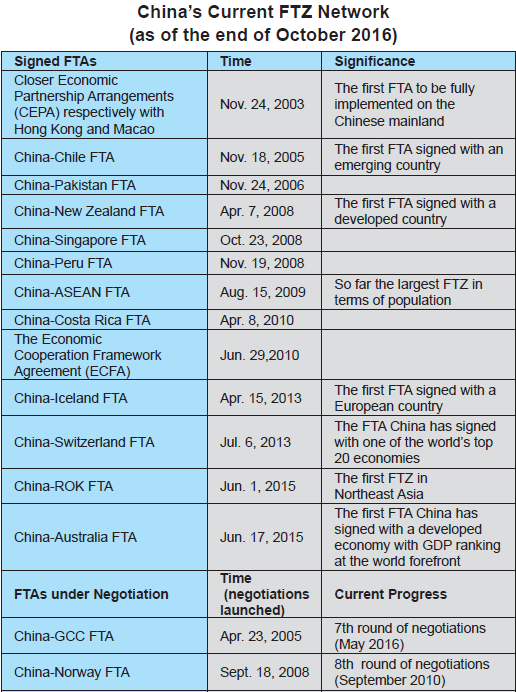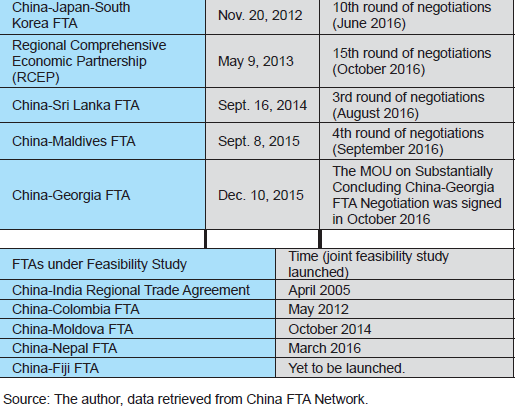Free Trade Zones for a More Open Market
China Today by LI GANG, December 23, 2016 Adjust font size:

UNDER the background of enhanced economic globalization and multiple challenges to free trade, countries are generally opting for bilateral and multilateral Free Trade Agreements (FTAs). These transactions remove trade and investment barriers and promote regional economic development, which explains the growing number of Free Trade Zones (FTZs). To adapt to the latest trends of economic globalization and further promote China’s opening-up, the Chinese government has accelerated its establishment of FTZs. Sticking to the cardinal principle of win-win and mutual benefit, China has built many FTZs with the aim of propelling common development of China and other countries and regions of the world.
China’s FTA Network
So far China has formally signed 14 FTAs, involving 22 countries and regions. Among them are the Closer Economic Partnership Arrangements (CEPAs), concluded between the Chinese mainland and, respectively, the separate customs territories of Hong Kong and Macao, in 2003. They are the first FTAs to be fully implemented on the Chinese mainland.
China has signed and implemented five FTAs with developing and emerging countries. They are: Chile, Pakistan, Peru, Costa Rica, and the Republic of Korea. China has moreover signed five FTAs with developed countries: New Zealand, Singapore, Iceland, Switzerland, and Australia. Among the latter five, New Zealand is the first developed country to sign an FTA with China, and Iceland the first European country to sign an FTA with China. The China-ASEAN FTA is currently the only multilateral one.


Besides, the Chinese mainland and Taiwan have signed the Economic Cooperation Framework Agreement (ECFA), which can be considered as a preliminary framework arrangement for an FTA negotiation.
In addition to FTAs that have been officially signed, more FTA talks are in progress. They include the Regional Comprehensive Economic Partnership (RCEP); the China-GCC (Gulf Cooperation Council); the China-Norway FTA; the China-Japan-South Korea FTA; the China-Sri Lanka FTA; the China-Maldives FTA; and the China-Georgia FTA. Moreover, China completed in October 2007 a joint study on the China-India Regional Trading Arrangement (RTA). The country also launched feasibility studies on the China-Colombia FTA in 2012, the China-Moldova FTA in 2014, and the China-Nepal FTA in 2016.